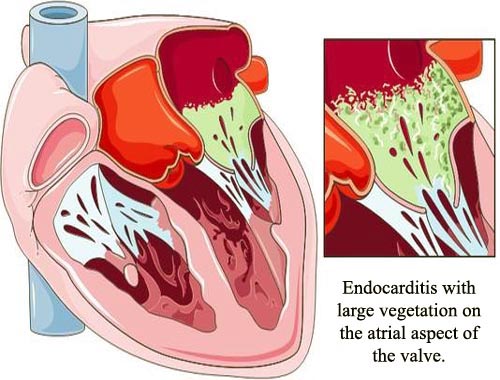Endocarditis
Endocarditis is an inflammation of heart's inner lining. The most common type, bacterial endocarditis, occurs when germs enter the heart. These germs come through the bloodstream from another part of the body, often from mouth. Bacterial endocarditis can damage heart's valves. If untreated, it can be life-threatening. It is rare in healthy hearts. Risk factors include having: An abnormal or damaged heart valve; A severe case of mitral valve prolapse; An artificial heart valve; Certain heart defects; If there is a high risk of bacterial endocarditis, a doctor might prescribe antibiotics before dental work and certain types of surgery. Presentation is often nonspecific and most commonly includes fever. Historical sources of bacteremia should be considered, such as indwelling vascular catheters, recent dental work, and intravenous drug use. Symptoms are often subtle and exam is often unrevealing, but may demonstrate cardiac murmur, peripheral emboli, Osler nodes, Roth spots, and Janeway lesions. Three sets of blood cultures should be obtained prior to initiation of antibiotic therapy. An echocardiogram should be obtained in all suspected cases.
